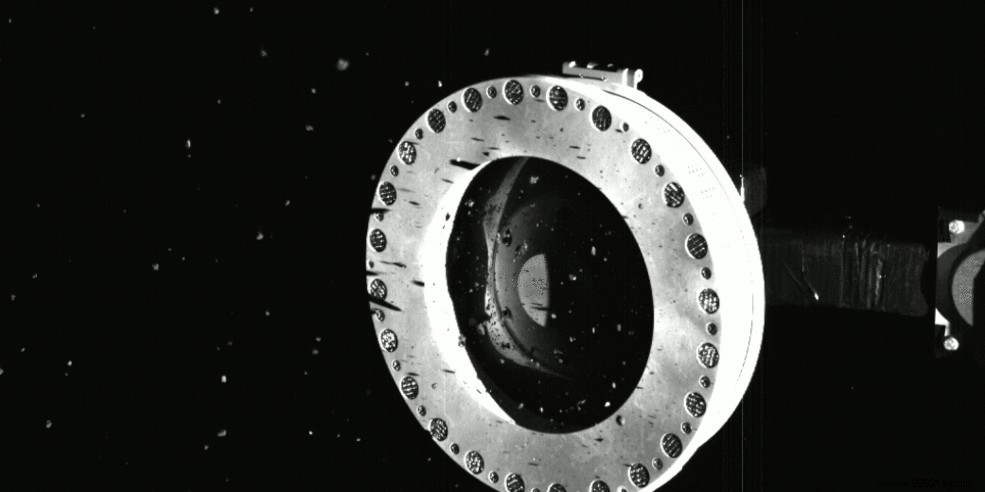A few days ago, the OSIRIS-REx probe landed successfully on the asteroid Bennu in an attempt to collect some rock and dust. According to NASA, the sampling head was so full that it could not close properly. Result:matter escaped into space.
You probably haven't missed it. On October 21, four years after its launch from Cape Canaveral (Florida), the American probe OSIRIS-REX landed on the asteroid Bennu more than 330 million kilometers from Earth. The idea was to collect at least sixty grams of sample in order to bring them back to Earth. With that in mind, the craft slowly spiraled down before "kissing" the asteroid's surface for approximately six seconds, deploying its sample collection mechanism.
During this brief landing, the probe blew up some nitrogen gas on Bennu's surface in an attempt to lift some material which was then collected by the arm sampling head. At a distance of more than 300 million kilometers, NASA, on the other hand, had to wait a few days before being able to confirm the success of the operation or not.
According to a recent statement from the US agency, Osiris-Rex actually collected much more material than expected (several hundred grams). The sampling head, on the other hand, would have penetrated so deeply into the surface of the asteroid (48 centimeters) and with such force that some rocks got stuck on the edge of the "lid".
Result:material escaped into space . Nevertheless, NASA prefers to drink the glass half full:the mission is a real success. On the other hand, we will not know exactly how much material the probe has collected before it returns to Earth. Indeed, given the escape rate of these samples, NASA preferred to "skip the weighing step" and put the samples directly in the shelter.

Osiris-Rex will still leave the vicinity of the asteroid next March, before returning to Earth on September 24, 2023 to deposit its samples in the desert of Utah, in the United States. The material, almost unchanged for 4.6 billion years , will then be studied by scientists around the world. We could then learn more about the formation of the Solar System. These samples could also contain ingredients that may have led to the evolution of life on Earth.
Finally, let's remember that the Japanese probe Hayabusa2 also landed on an asteroid a few months ago (Ryugu) with the aim of collecting samples. The latter should normally land in Australia on December 6.